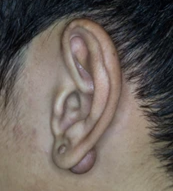Keloids are overgrown scar tissues that extend beyond the boundaries of the original wound. Around the ear, they are most frequently seen after piercing-related injuries—especially in the earlobe and helical rim.
These scars not only cause cosmetic concerns but can also result in pain, itching, tenderness, and night-time discomfort that impacts sleep and quality of life. Treating ear keloids is challenging due to their tendency to recur even after surgical removal, which is why a carefully planned, staged approach is essential.
At MACS Clinic, we follow an evidence-based, structured pathway to achieve symptom relief, aesthetic restoration, and recurrence prevention.
Step 1: Symptom Control & Keloid Softening
Before considering surgery, the first priority is to reduce inflammation, discomfort, and firmness of the keloid. This stage may last several weeks to months, depending on the keloid’s severity.
Non-surgical treatment plan includes:
- Pressure therapy – Using specially designed clip devices to apply gentle, continuous compression to the keloid, helping to flatten it over time.
- Scar massage – Regular gentle massage with emollients to improve pliability and reduce tightness.
Silicone gel or silicone sheeting – Proven to improve scar hydration and soften the tissue.
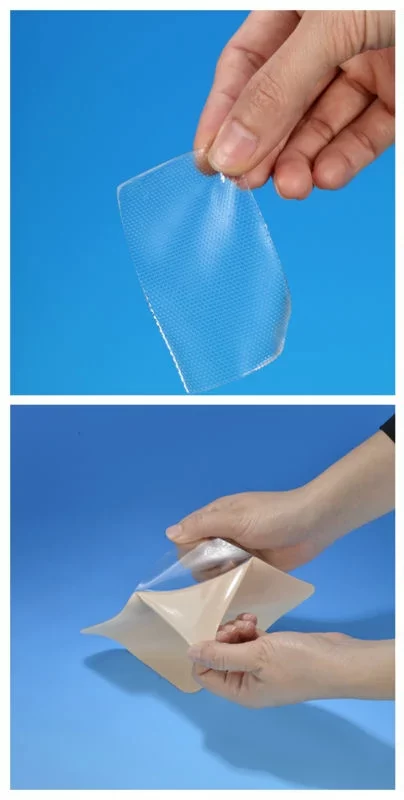
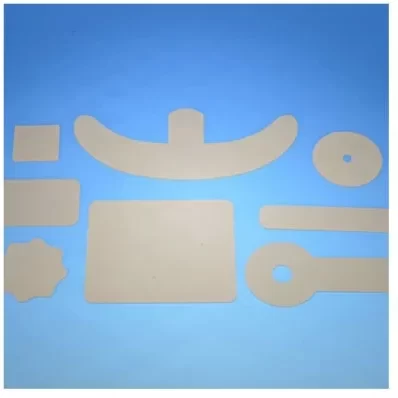
- Intralesional steroid injections – Typically triamcinolone acetonide, injected directly into the keloid to reduce inflammation, itching, and bulk.
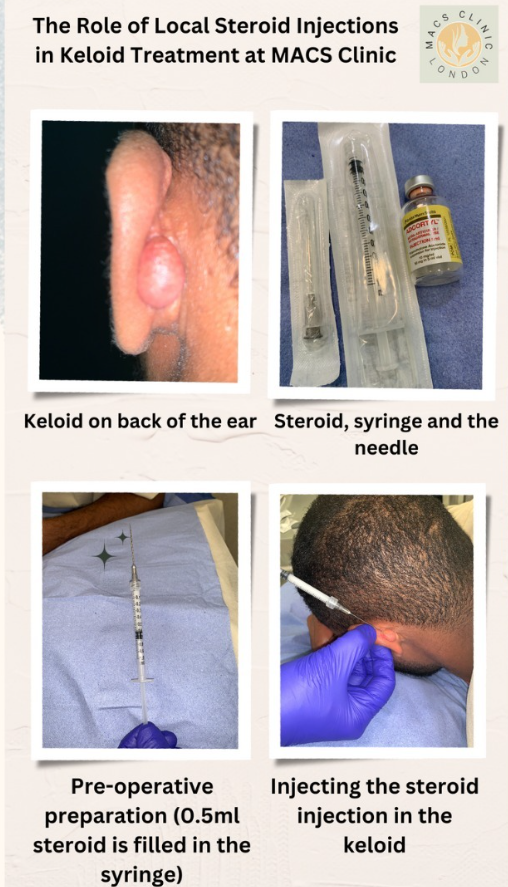
Step 2: Intralesional Excision Under Local Anaesthesia
Once the keloid is smaller, softer, and less inflamed, Mr. Vadodaria proceed to surgical removal.
Hes performs intralesional excision, meaning that the cut is made within the keloid tissue, leaving a small rim of scar to minimise tension on healthy skin and reduce recurrence risk.
- Anaesthesia: Local anaesthetic injection ensures a painless procedure.
- Goal: Remove the bulk of the keloid while protecting surrounding healthy tissue.
- Aesthetic considerations: Incisions are planned along natural skin folds where possible, to blend with the ear’s contour.
Step 3: Post-Operative Recurrence Prevention
Surgery alone is rarely enough to prevent keloid regrowth. That’s why we follow an integrated aftercare plan:
- Pressure clip earrings – A discreet, aesthetically acceptable compression device worn for extended periods (often several months) to maintain flatness.
- Post-operative steroid injections – Administered at regular intervals after wound healing to further suppress excessive scar activity.
- Continued silicone gel application – Helps maintain scar hydration and pliability.
This combined approach significantly reduces the likelihood of recurrence and promotes a more natural ear contour.
Why This Stepwise Approach Works
Keloids have a high recurrence rate if treated with excision alone—sometimes exceeding 50–80%. By first reducing inflammation, then performing conservative excision, and following up with sustained compression and steroid therapy, we break the cycle of regrowth.
This protocol:
- Improves patient comfort before surgery
- Allows for a smaller, less traumatic excision
- Maintains long-term control of scar behaviour
- Produces a better cosmetic outcome
Case Results at MACS Clinic
In this featured case, the patient presented with painful, itchy keloids on the earlobe following piercing. Through:
- Pre-operative steroid injections and silicone therapy
- Careful intralesional excision under local anaesthetic
- Prolonged compression earring wear and post-op steroids
the patient achieves better symptom relief, a increased chances of smooth ear contour, and less chances of recurrence .
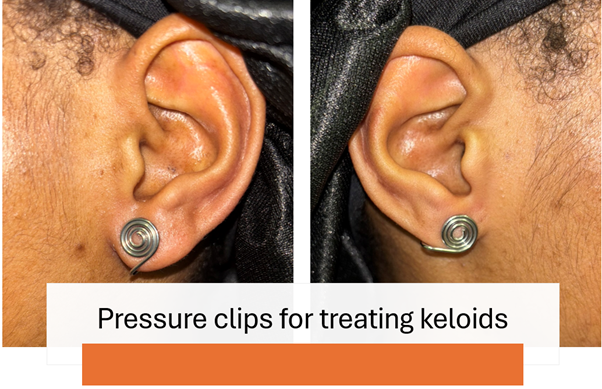

📞 Contact MACS Clinic to book your consultation and discuss a personalised treatment plan for ear keloids.
- Phone: 020 7078 4378
- WhatsApp: 07792 648 726
- Email: enquiries@macsclinic.co.uk
- Website: macsclinic.co.uk
BOOK a FREE Video Consultation: https://calendly.com/macsclinic/free-video-consultation?month=2025-01

